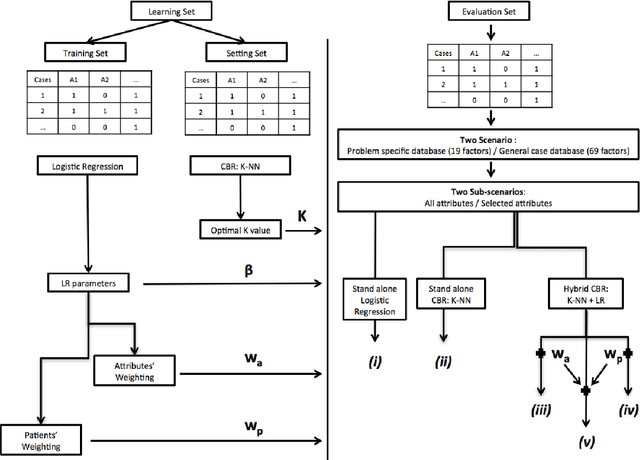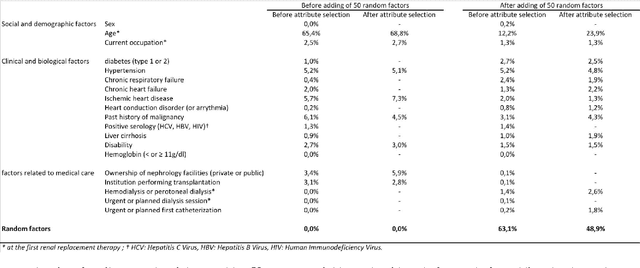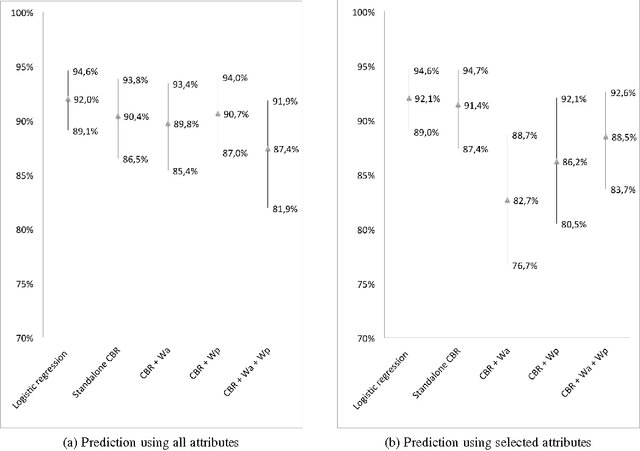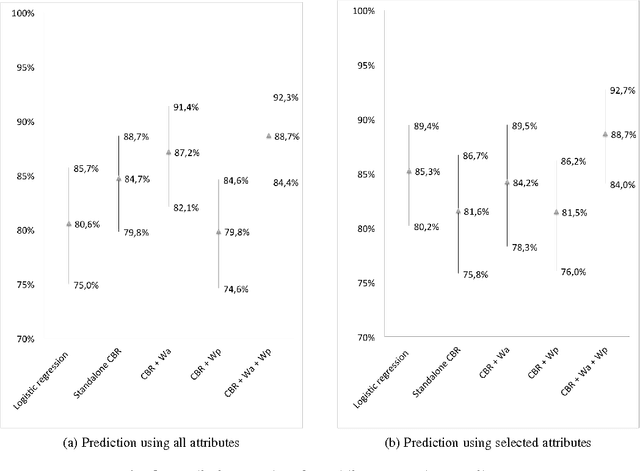Wassim Jouini
K-Nearest Neighbour algorithm coupled with logistic regression in medical case-based reasoning systems. Application to prediction of access to the renal transplant waiting list in Brittany
Mar 07, 2013



Abstract:Introduction. Case Based Reasoning (CBR) is an emerg- ing decision making paradigm in medical research where new cases are solved relying on previously solved similar cases. Usually, a database of solved cases is provided, and every case is described through a set of attributes (inputs) and a label (output). Extracting useful information from this database can help the CBR system providing more reliable results on the yet to be solved cases. Objective. For that purpose we suggest a general frame- work where a CBR system, viz. K-Nearest Neighbor (K-NN) algorithm, is combined with various information obtained from a Logistic Regression (LR) model. Methods. LR is applied, on the case database, to assign weights to the attributes as well as the solved cases. Thus, five possible decision making systems based on K-NN and/or LR were identified: a standalone K-NN, a standalone LR and three soft K-NN algorithms that rely on the weights based on the results of the LR. The evaluation of the described approaches is performed in the field of renal transplant access waiting list. Results and conclusion. The results show that our suggested approach, where the K-NN algorithm relies on both weighted attributes and cases, can efficiently deal with non relevant attributes, whereas the four other approaches suffer from this kind of noisy setups. The robustness of this approach suggests interesting perspectives for medical problem solving tools using CBR methodology.
Collaboration and Coordination in Secondary Networks for Opportunistic Spectrum Access
Apr 13, 2012

Abstract:In this paper, we address the general case of a coordinated secondary network willing to exploit communication opportunities left vacant by a licensed primary network. Since secondary users (SU) usually have no prior knowledge on the environment, they need to learn the availability of each channel through sensing techniques, which however can be prone to detection errors. We argue that cooperation among secondary users can enable efficient learning and coordination mechanisms in order to maximize the spectrum exploitation by SUs, while minimizing the impact on the primary network. To this goal, we provide three novel contributions in this paper. First, we formulate the spectrum selection in secondary networks as an instance of the Multi-Armed Bandit (MAB) problem, and we extend the analysis to the collaboration learning case, in which each SU learns the spectrum occupation, and shares this information with other SUs. We show that collaboration among SUs can mitigate the impact of sensing errors on system performance, and improve the convergence of the learning process to the optimal solution. Second, we integrate the learning algorithms with two collaboration techniques based on modified versions of the Hungarian algorithm and of the Round Robin algorithm that allows reducing the interference among SUs. Third, we derive fundamental limits to the performance of cooperative learning algorithms based on Upper Confidence Bound (UCB) policies in a symmetric scenario where all SU have the same perception of the quality of the resources. Extensive simulation results confirm the effectiveness of our joint learning-collaboration algorithm in protecting the operations of Primary Users (PUs), while maximizing the performance of SUs.
UCB Algorithm for Exponential Distributions
Apr 07, 2012Abstract:We introduce in this paper a new algorithm for Multi-Armed Bandit (MAB) problems. A machine learning paradigm popular within Cognitive Network related topics (e.g., Spectrum Sensing and Allocation). We focus on the case where the rewards are exponentially distributed, which is common when dealing with Rayleigh fading channels. This strategy, named Multiplicative Upper Confidence Bound (MUCB), associates a utility index to every available arm, and then selects the arm with the highest index. For every arm, the associated index is equal to the product of a multiplicative factor by the sample mean of the rewards collected by this arm. We show that the MUCB policy has a low complexity and is order optimal.
 Add to Chrome
Add to Chrome Add to Firefox
Add to Firefox Add to Edge
Add to Edge